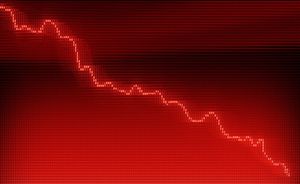
Tapestry’s second quarter results were met with a significant negative market reaction, reflecting investor concerns despite revenue that surpassed Wall Street expectations. Management attributed the quarter’s top-line growth to strong momentum at its flagship Coach brand and successful customer acquisition among Gen Z and millennials, particularly in North America and China. However, the quarter’s bottom line was challenged by a substantial non-cash impairment charge related to Kate Spade, as well as higher operating expenses and new tariff impacts. CEO Joanne Crevoiserat acknowledged these headwinds, emphasizing, “We are clear-eyed about the environment… and even with tariffs, we’re continuing to expand our operating margin this year.”
Is now the time to buy TPR? Find out in our full research report (it’s free).
Tapestry (TPR) Q2 CY2025 Highlights:
- Revenue: $1.72 billion vs analyst estimates of $1.68 billion (8.3% year-on-year growth, 2.7% beat)
- EPS (GAAP): -$2.49 vs analyst estimates of $0.98 (significant miss)
- Adjusted EBITDA: $331.7 million vs analyst estimates of $330.6 million (19.2% margin, in line)
- EPS (GAAP) guidance for the upcoming financial year 2026 is $5.38 at the midpoint, missing analyst estimates by 1.8%
- Operating Margin: -33.9%, down from 14.8% in the same quarter last year
- Locations: 1,371 at quarter end, down from 1,402 in the same quarter last year
- Constant Currency Revenue rose 8% year on year (0% in the same quarter last year)
- Market Capitalization: $20.58 billion
While we enjoy listening to the management's commentary, our favorite part of earnings calls are the analyst questions. Those are unscripted and can often highlight topics that management teams would rather avoid or topics where the answer is complicated. Here is what has caught our attention.
Our Top 5 Analyst Questions From Tapestry’s Q2 Earnings Call
- Brooke Roach (Goldman Sachs) asked about Coach’s growth and tariff mitigation strategies. CEO Joanne Crevoiserat stressed continued customer acquisition and growth investment, while CFO Scott Roe detailed ongoing supply chain and pricing actions to address tariff impacts.
- Ike Boruchow (Wells Fargo) questioned the sustainability of new customer momentum and the ability to maintain margins amid higher tariffs. Crevoiserat highlighted higher retention rates among young consumers, and Roe explained that margin expansion remains a long-term focus despite near-term tariff costs.
- Matthew Boss (JPMorgan) probed the balance between higher average revenue per unit (AUR) and unit growth at Coach. Brand President Todd Kahn affirmed that both metrics were expected to grow, supported by focused product offerings and reduced promotions.
- Adrienne Yih (Barclays) asked about structural changes enabling Coach’s margin expansion and whether price increases would continue. Kahn emphasized the shift to direct-to-consumer channels, product innovation, and data-driven pricing, while Roe reiterated disciplined capital allocation.
- Michael Binetti (Evercore) inquired about the operational impact of the end of de minimis tariff exemptions and growth pacing in Europe. Roe clarified the de minimis change contributed about one-third of the tariff impact, but supply chain agility should limit disruption, and European growth moderation was intentional to maintain brand integrity.
Catalysts in Upcoming Quarters
In the coming quarters, our analysts will focus on (1) the pace of Coach’s new customer acquisition and effectiveness of store expansion, (2) evidence that tariff mitigation strategies are reducing margin headwinds, and (3) progress in Kate Spade’s turnaround—particularly improvements in brand awareness, customer engagement, and early signs of revenue stabilization. Developments in global consumer demand and any additional supply chain adjustments will also be closely watched.
Tapestry currently trades at $98.50, down from $113.56 just before the earnings. Is there an opportunity in the stock?Find out in our full research report (it’s free).
Our Favorite Stocks Right Now
Donald Trump’s April 2025 "Liberation Day" tariffs sent markets into a tailspin, but stocks have since rebounded strongly, proving that knee-jerk reactions often create the best buying opportunities.
The smart money is already positioning for the next leg up. Don’t miss out on the recovery - check out our Top 5 Strong Momentum Stocks for this week. This is a curated list of our High Quality stocks that have generated a market-beating return of 183% over the last five years (as of March 31st 2025).
Stocks that made our list in 2020 include now familiar names such as Nvidia (+1,545% between March 2020 and March 2025) as well as under-the-radar businesses like the once-small-cap company Exlservice (+354% five-year return). Find your next big winner with StockStory today.
StockStory is growing and hiring equity analyst and marketing roles. Are you a 0 to 1 builder passionate about the markets and AI? See the open roles here.






